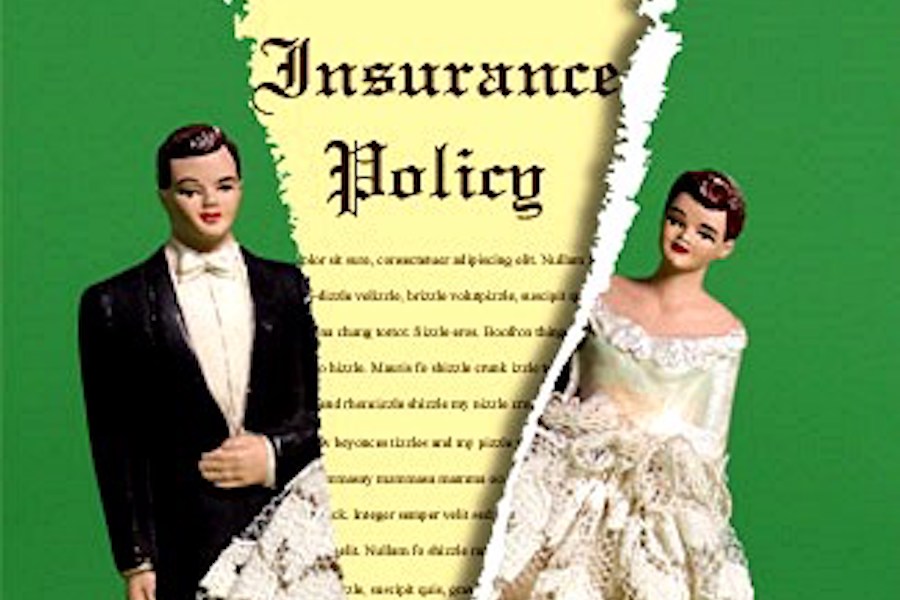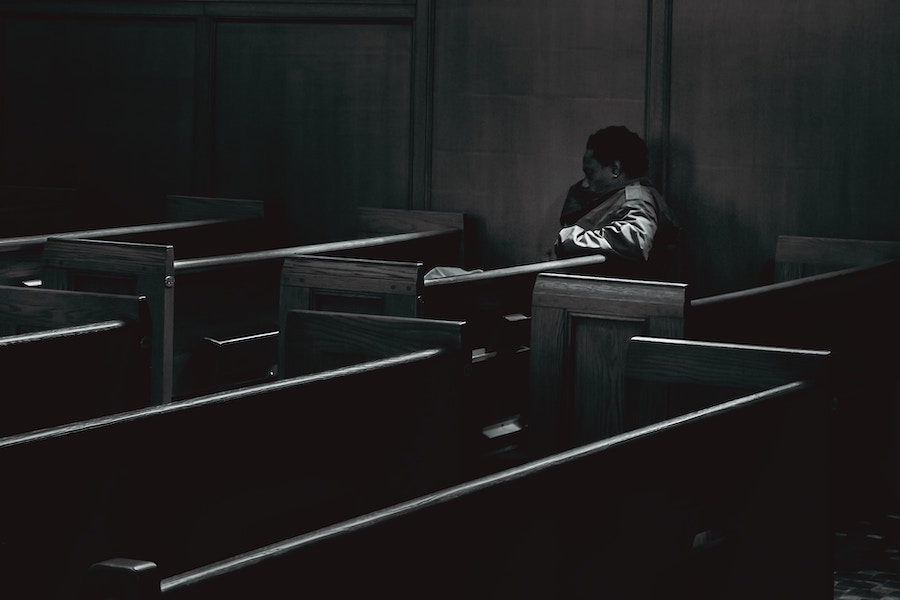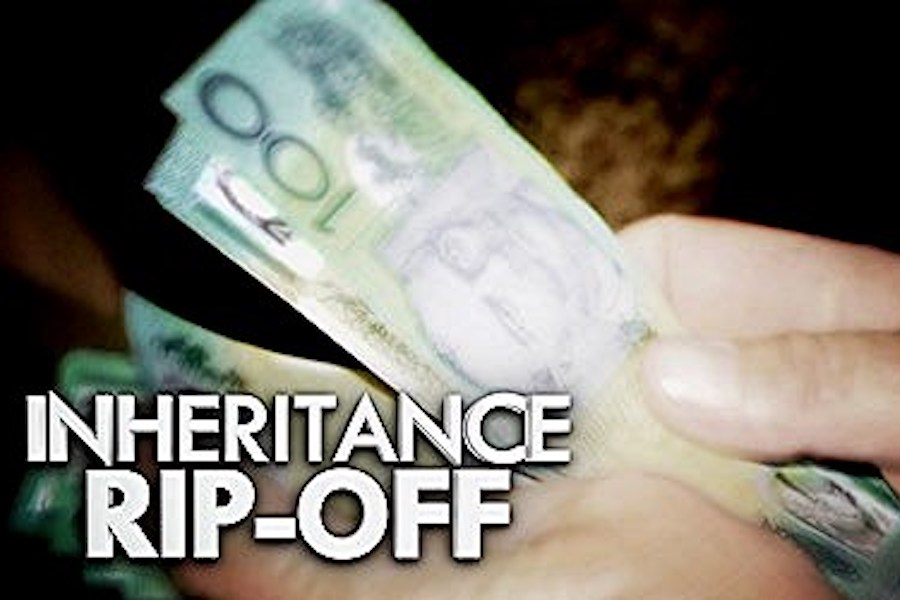1. INTRODUCTION
Constructive trusts have been evolving for more than two centuries. However, it has only been in the last several years that it is now developed to the point where it is almost impossible to predict and define all the circumstances in which its equitable principles might apply .
As Chief Justice McEachern stated only a few years ago in Clarkson v McCrossen Estate (1995) 13 R.F.L. (4th) 237 (BCCA):
“I wish to mention that the law of unjust enrichment is in its early formative stages; it will continue to mature incrementally. The few cases that have been decided cannot be taken as the final word on any of these matters. They point the direction the law is taking, but not the many contours that must be traversed along the way.”
The purpose of this article is to briefly review the development of the law of constructive trusts, and to then focus on three significant recent decisions that reflect where this important area of the law has now reached.
2. WHAT IS A CONSTRUCTIVE TRUST ?
“A constructive trust comes into existence, regardless of any party’s intent, when the law imposes upon a party an obligation to holds specific property for another. The person obligated becomes by force of law a constructive trustee towards the person to whom he owes performance of the obligation.”
Law of Trusts on Canada – Donovan Waters, page 378
Lord Denning in Hussey v Palmer (1972) 3 All E.R. 70 (CA) described a constructive trust as:
“by whatever name it is described, it is a trust imposed by law whenever justice and good conscience require it. It is a liberal process, founded upon large principles of equity, to be applied in cases where the defendant cannot conscientiously keep the property for himself alone, but ought to allow another to have the property or a share in it. It is an equitable remedy where the court can enable an aggrieved party to obtain restitution”.
The principle of “unjust enrichment” lies at the heart of the constructive trust. The principle of “unjust enrichment” has played a significant role in the development of this equitable remedy.
Lord Mansfield in Moses v Macferlan (1760) , 2 Burr. 1005, 97 E.R. 676, stated:
“the gist of this kind of action is the defendant, upon the circumstances of the case, is obliged by the ties of natural justice and equity to refund the money”.
One of the earliest situations that a constructive trust was imposed concerned the acquisition of a secret profit by persons who were employed to act for others. Since then, it has been applied to countless different fact patterns, though it is perhaps best known for its application in matrimonial and cohabitation property cases.
3. WHAT IS A REMEDIAL CONSTRUCTIVE TRUST?
A remedial constructive trust is a trust imposed by court order as a remedy for a wrong. The entitlement to that remedy may be a matter of substantive law, but the trust itself is not created by the acts of the parties, or even by the obligation to make restitution, but by the order of the court. As with other court orders, the trust will come into being when the order is pronounced, unless, in an appropriate case, the order is made retroactive or its coming into force is deferred. It may be that in many cases where a remedial constructive trust is imposed, the court will order that it be imposed with effect from the time when the situation arose which gave rise to the unjust enrichment.
There must, of course, be a causal connection between the property in question and the unjust enrichment. See Sorochan v. Sorochan, supra, and Rosenfeldt v. Olson, 1 B.C.L.R. (2d) 108, [1986] 3 W.W.R. 403, 25 D.L.R. (4th) 472 (C.A.).
The remedial constructive trust must be distinguished from the substantive constructive trust which the court declares to have arisen, as a result of the conduct of the parties, and by the force of that conduct alone, at the earlier time when the relevant conduct occurred. If a substantive constructive trust is found to have arisen in that way, then there is no discretion remaining in the court to refuse to declare the existence of the trust.
The ordering of a remedial constructive trust is only one of the remedies which may be ordered as a result of a wrong committed by one person against another that is properly categorized as unjust enrichment. The available remedies include an order to pay money, as damages, and they include other remedies stemming either from legal origins or equity origins, as the circumstances of the case may require.
“It must be emphasized that the constructive trust is remedial in nature. If the court is asked to grant such a remedy and determines that a declaration of constructive trust is warranted, then the proprietary interest awarded pursuant to that remedy will be deemed to have arisen at the time when the unjust enrichment first occurred.” LeClair v Leclair Estate, May 1998, B.C.C.A
4. THE RESURRECTION OF “GOOD CONSCIENCE”
Prior to the Supreme Court of Canada’s decision in Soulos v Korkontzilas (1997) SCR 217, it had become trite law that to support a finding of a constructive trust one had to prove an unjust enrichment comprised of :
1) an enrichment,
2) a corresponding deprivation,
3) no juristic reason for the enrichment
( see inter alia Pettkus v Bekker (1980) 19 RFL (2d) 165, Sorochan v Sorochan (1986) 2 SCR 39 and Peter v Beblow (1993) 1SCR 980.)
The decision in Soulos has radically changed what had been trite law by holding that despite the absence of an enrichment and a corresponding deprivation, the doctrine of constructive trust may still be imposed “to hold persons in different situations to high standards of trust and probity and prevent them from retaining property which in “good conscience” they should not be permitted to retain.”
In Soulos, a realtor Korkontzilas had negotiated a commercial building for his client, but then decided to purchase the property for himself, which he did. He lied to his client that the deal had fallen through, but three years later his client found out what had really occurred.
The client sued Korkontzilas and alleged a breach of fiduciary duty that gave rise to a constructive trust. The problem for the plaintiff however, was that property values had fallen from the time of the purchase, so that the plaintiff could not prove actual damages. At trial, the court found a breach of fiduciary duty, but declined to order a constructive trust because since the property value had fallen, Korkontzilas had not been enriched. The Ontario Court of Appeal reversed this decision, and the Supreme Court upheld the reversal.
McLaughlin J. reviewed the history of the remedy of constructive trust in detail, and found that the principle of “good conscience” has always been at the center of the doctrine of constructive trust, and lies at the very foundation of equitable jurisdiction.
By applying the principle of “good conscience”, the court found that it applies to constructive trusts where the defendant has not obtained a benefit or where the plaintiff has not suffered a loss.
Justice McLaughlin boldly stated that “It thus emerges that a constructive trust may be imposed where good conscience so requires. I conclude that in Canada, under the broad umbrella of good conscience, constructive trusts are recognized both for wrongful acts like fraud and breach of duty of loyalty, as well as to remedy unjust enrichment and corresponding deprivation.”
The court found four conditions that should be present for a constructive trust to be applied based on wrongful conduct, namely:
(1) The defendant must have been under an equitable obligation, that is, an obligation of the type that courts of equity have enforced, in relation to the activities giving rise to the assets in his hands;
(2) The assets in the hands of the defendant must be shown to have resulted from deemed or actual agency activities of the defendant in breach of his equitable obligation to the plaintiff;
(3) The plaintiff must show a legitimate reason for seeking a proprietary remedy, either personal or related to the need to ensure that others like the defendant remain faithful to their duties and;
(4) There must be no factors which would render imposition of a constructive trust unjust in all the circumstances of the case; e.g., the interests of intervening creditors must be protected.
The doctrine of “good conscience” was subsequently applied by the B.C.C.A in the 1998 decision of Roberts v Martindale 21 ETR (4th) 475.
The reasoning of Roberts v Martindale is in my view, a good example of a fact pattern where the application of a remedial constructive trust will increasingly be applied by the courts.
FACTS : The deceased and the defendant were formerly husband and wife. The deceased named the husband as the beneficiary of a group life insurance policy, and later divorced him due to his infidelity. The divorce was marked by great bitterness .The deceased intended that the plaintiff would be the beneficiary of the policy. Both the plaintiff and the deceased believed that steps had been taken to revoke the designation in favour of the husband and appoint the plaintiff as beneficiary in his place. The husband remained beneficiary, and the plaintiff claimed recovery of money paid to the husband .
HELD: The court held that the husband should not be allowed to keep the money because he had surrendered any right he might have had to property of the deceased in their separation agreement. The breach of their separation agreement by the husband was sufficient for the court to invoke the doctrine of remedial constructive trust, and the money was declared to be properly owing to the plaintiff.
Southin J. followed the maxim of equity that will not permit even an act of Parliament to be used as an instrument of fraud, and applied the notion of “good conscience” to impose a remedial constructive trust, because Mr. Martindale had, by the separation agreement surrendered any right he may have had to the property of the deceased.
5. MUTUAL WILLS
Mutual wills are wills made by two or more people, usually a husband and wife which are drawn on virtually identical terms. Frequently, the parties will leave everything to each other, with gifts over to their children, or to strangers.
A constructive trust may be imposed on the survivor of the parties or on his or her personal representative if it can be shown that there was an agreement between the parties not to revoke their wills, and to dispose of their property in a particular way if the survivor has subsequently broken the agreement and made another will. The personal representative of the survivor will then be required to hold the property on trust for the beneficiaries of the mutual wills.
The property that will be the subject of the constructive trust depends upon the agreement between the parties. It may include only the property of the first to fie, or the property of both until the death of the first, and it may include property acquired by the survivor after that date.
A recent example of the courts imposing a constructive trust on a mutual will situation was in the decision of the B.C.C. A. in University of Manitoba v Sanderson (1998) 155 D.L.R. (4th) 40.
FACTS: On 9 July 1970, Michael Daniel Sanderson and his wife, Katherine Velma Sanderson, executed an agreement under seal (the “Agreement”) and mutual wills. The Sandersons had no children.
The Agreement provided:
WITNESSETH that in consideration of the premises the Parties hereto agree as follows
1. That the Party of the First Part will execute a Will of even date in the form of the Will annexed as Schedule I to this Agreement.
2.That the Party of the Second Part will execute a Will of even date in the form of the Will annexed as Schedule II to this Agreement.
3. That during the joint lives of the Parties hereto neither of the said Wills will be revoked or altered without the written consent of both the Parties hereto.
4. That after the death of one of the Parties hereto the said Will of the survivor will not be altered or revoked.
5. That should either of the said Wills be revoked by operation of law the surviving Party hereto will execute a new Will leaving the residue of his or her estate to the University of Manitoba upon the same terms and conditions as are contained in the said Wills.
6. This Agreement shall enure to the benefit of and be binding upon the Parties hereto and their respective personal representatives and assigns.
Clause 1 of the mutual wills provided:
I DECLARE that my wife … [husband …] and I have agreed with one another to execute wills of even date and in similar terms and in consideration thereof we have agreed that such respective wills
shall not hereafter be revoked or altered either during our joint lives or by the survivor after the death of one of us AND I FURTHER DECLARE that the provisions of this my will are made in consideration of such agreement.
The mutual wills further provided that the estate of the first spouse was to be held in trust for the surviving spouse for his or her life, or until remarriage, and the trustees were granted discretion to employ income and capital for the benefit of the surviving spouse. The residue was left to the appellant, the University of Manitoba, in trust to establish a perpetual bursary fund “to assist talented prospective teacher-students who demonstrate ability in scholastic fields of study such as mathematics science foreign languages (including Ukrainian and Polish) worthy research work and in other worthy subjects pertaining to the teaching profession”.
The Sandersons executed codicils to the mutual wills on 20 July 1973. The codicils stated that their domicile was British Columbia and the reference to “teacher-students” was changed to “undergraduate student teachers”. They executed second codicils to the mutual wills on 13 July 1977 which substituted Montreal Trust Company for The Royal Trust Company as the co-executor of the mutual wills. Both the 1973 and 1977 codicils contained the statement: “In all other respects I confirm my said Will”.
On 29 March 1984, Montreal Trust wrote to the Sandersons suggesting a review of their wills. On 21 April 1984, Mr. Sanderson responded by endorsing the letter, “Keep the Will in force please”, and returned it to Montreal Trust.
On 18 July 1985, Mrs. Sanderson died and shortly thereafter Mr. Sanderson made a new will, the provisions of which were inconsistent with the terms and provisions of the mutual wills.
When Mrs. Sanderson died, almost all of her assets were held jointly with Mr. Sanderson. The trial judge found that Mr. Sanderson obtained ownership of all the assets by right of survivorship or “right of transfer”. The assets were transferred into his sole name on 30 August 1985. Montreal Trust renounced its right to probate Mrs. Sanderson’s estate, because “there was no estate to probate” and, as a result, Mrs. Sanderson’s will was never probated.
On 30 August 1985, Mr. Sanderson executed a new will (the “1985 will”), naming Montreal Trust Company of Canada as the sole executor and trustee. In his 1985 will, Mr. Sanderson divided the residue of his estate between the following beneficiaries: a one-quarter share to his sister-in-law, the
defendant, Julia Milne; a one eighth share to each of his nephew, the defendant, Michael Seneshen and the defendant, Victoria Scott; a one/twelfth share to each of the defendants, Jean Andruchuk and Mary Wus, and a one/twelfth share to Peter Seneshen, with the balance to the University on the identical trust to that contained in the mutual wills. Mr. Peter Seneshen’s gift lapsed as he predeceased Mr. Sanderson and the gifts to the beneficiaries were on condition that the beneficiary survive Mr. Sanderson.
On 31 January 1994, Mr. Sanderson died. His estate, which was then made up almost entirely of treasury bills, investment certificates and cash, had a value of $1,733,855.88 as at 21 June 1996.
On the application of Montreal Trust, which was granted administration of the estate, letters probate were issued on 6 February 1995 in relation to the 1985 Will.
The University filed a Caveat on 22 July 1994 which read, in part:
The Caveator is the beneficiary under trust created under the terms of the Mutual Wills of the deceased Michael Daniel Sanderson and his deceased spouse, Katherine Velma Sanderson dated July 9, 1970. The Caveator claims to be entitled to the entire residue of the estate of Michael Daniel Sanderson under the said Mutual Will of July 9, 1970 ….
Montreal Trust declined to bring an application to resolve the conflicting claims of the University and the individual defendants and, as a result, the University commenced an action seeking a declaration that the defendant executor, Montreal Trust, holds all of the assets of the estate of Michael Daniel Sanderson as constructive trustee for the sole benefit of the University.
HELD :
“This is a case in which there was an express agreement made that the mutual wills would not be revoked or altered during the joint lives of the parties to the agreement and that after the death of the first, the will of the survivor would not be altered or revoked. There was an exchange of promises
and Mrs. Sanderson did not revoke her will, although she had the legal right to do so, before her death.
Equity considers it a fraud upon the deceased, who has acted upon and relied upon the mutually binding nature of the agreement, for the survivor to change the will and break the agreement. As the deceased cannot intervene to enforce the obligation, equity will enforce the survivor’s obligation, despite the survivor’s subsequent intentions.”
It is important to remember that just because a husband and wife have simultaneously made mutual wills, giving each to the other a life interest with similar provisions in remainder, is not in itself evidence of an agreement not to revoke the wills. In the absence of a definite agreement to that effect, there is no implied trust precluding the wife from making a fresh will inconsistent with her former will, even though her husband has died and she has taken the benefits conferred by his will. It is only where an agreement has been made, that equity will cause the court to enforce the contract and require the survivor to dispose of the property in a manner consistent with the terms of the will. The survivor will be precluded from making a subsequent will to deal with that property or to dispose of the property in a manner inconsistent with the trusts imposed.
6. CONCLUSION
The court will only intervene where the facts show that the judicious parent , acting in full knowledge of the true facts, would have made a different disposition of the estate among his adult children. Griffin v McCarthy 36 E.T.R. 129
In Chernecki v Vangolen 1997 3 W.W.R. 589 (C.A.), the Court of Appeal found that a will that left $1.16 million dollars equally to two children should not be interfered with, as the will had made adequate provision for each child.
In Cavadini v Mahaffey Estate ( 1995) B.C.A.C. 220 it was held that the law does not require a testator to treat all children equally.








 Part Two in a Series on Financial Abuse
Part Two in a Series on Financial Abuse